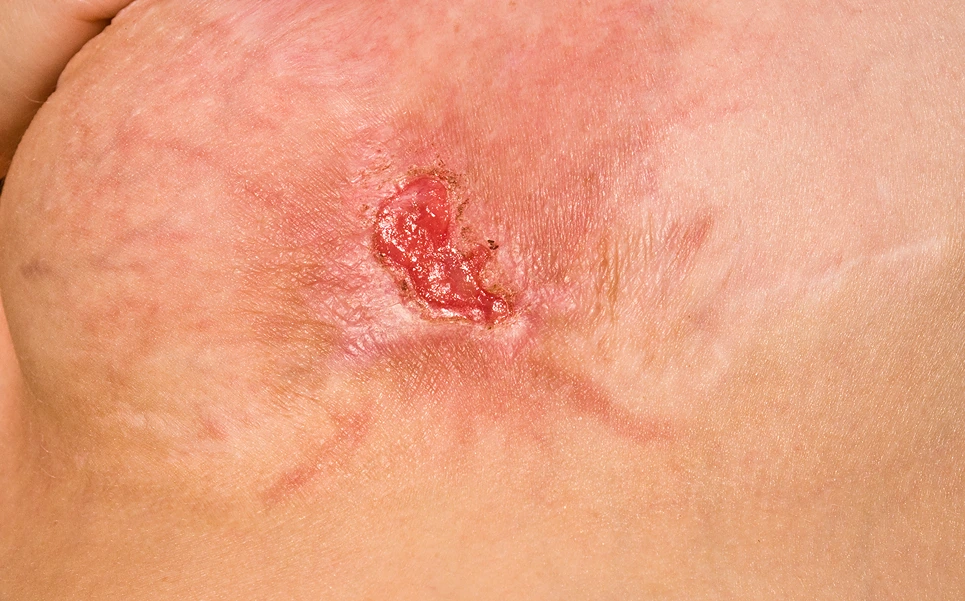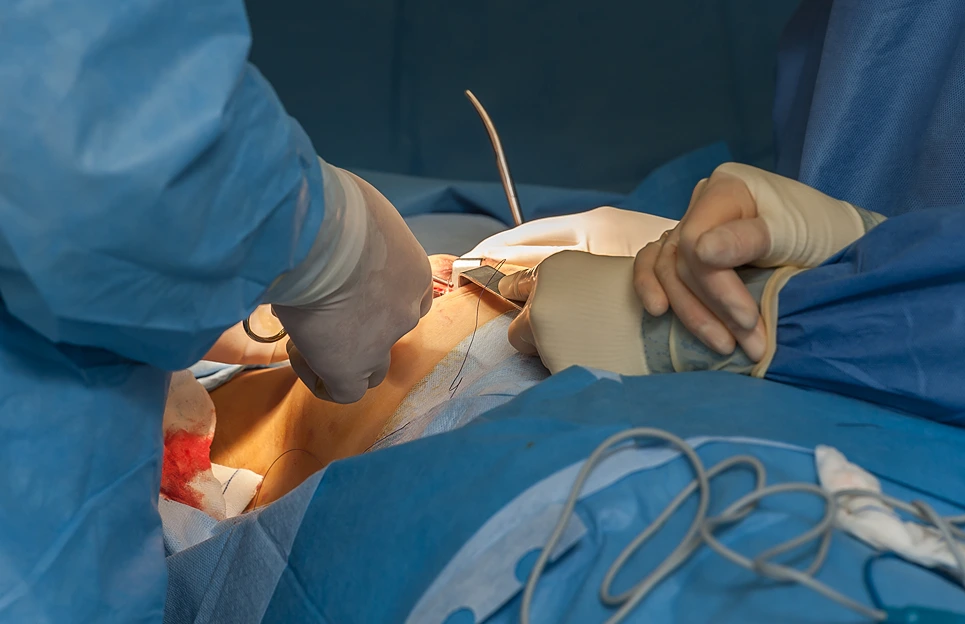

Have you heard of Mohs surgery? You may be surprised to learn that this specialized surgical technique, most commonly used for skin cancer, can also play a role in treating some rare types of breast cancer.
Mohs micrographic surgery, named after its pioneer Dr. Frederic Mohs, is a precise surgical technique used to treat certain skin cancers.
Unlike other methods that estimate the extent of the cancer and remove a significant margin of healthy tissue, Mohs surgery removes skin cancer in thin layers, with each layer microscopically examined to map out the exact extent of the cancer cells.
This meticulous technique allows the surgeon to remove all of the cancer cells while sparing as much healthy tissue as possible. It boasts cure rates up to 99% for some skin cancers.
Mohs is most frequently used for common skin cancers like basal cell carcinoma and squamous cell carcinoma, especially on cosmetically significant or functionally important areas like the face. However, it can also be employed for certain melanomas and rarer skin malignancies.

You might be thinking, "But wait, isn't breast cancer different from skin cancer?"
You're right. The vast majority of breast cancers start in the ducts or lobules of the breast, not in the skin, so Mohs surgery is not commonly used for breast cancer. But in rare cases where breast cancer begins in the skin itself, Mohs can be a valuable tool.
What are some examples of these skin-based breast cancers? One is Paget's disease of the breast, which starts in the skin of the nipple and areola. Another is breast cancer that develops from areas of chronic skin inflammation or irritation, such as from a persistently red, scaly, or thickened patch of skin on the breast.
In these uncommon situations, Mohs surgery offers the advantage of precisely removing the cancer cells while preserving as much healthy breast tissue as possible in this sensitive area. The procedure can minimize scarring and disfigurement compared to more extensive excisions.
Deciding to use Mohs for a breast lesion is not a one-doctor decision. It involves a multidisciplinary approach, with breast surgeons, oncologists, and dermatologists specializing in Mohs surgery working together to determine if the technique is appropriate and to develop the overall treatment strategy.
So if you're dealing with a breast skin lesion, don't be surprised if your care team brings up Mohs as a potential option.
Mohs surgery is usually done with the patient awake, using only local anesthesia to numb the area. The visible tumor and a thin rim of surrounding skin are removed for the first Mohs layer.
Here's where the "mapping" part of Mohs comes in. The tissue is divided into sections, each color-coded with dyes, so that if any cancer cells are found, the surgeon knows exactly where to remove the next layer. The tissue is then immediately examined under a microscope in an on-site lab while you wait.
If cancer cells are seen at any of the edges, the surgeon goes back and removes another thin layer of skin from the precise location of the remaining cancer.
This process is repeated until the margins are clear of cancer. Depending on the extent of the tumor, this can take several hours, so bring a good book or some music to help pass the time!
Once the area is cancer-free, the wound may be closed with stitches if it's small. Larger wounds might be left to heal on their own or require reconstruction by a plastic surgeon.
Congratulations, you've completed your Mohs surgery! Now what?
For the first day or two, you'll want to take it easy. Get some rest, and avoid any strenuous activities that could put tension on your stitches. Pain is usually minimal and can be managed with over-the-counter medications.
Proper wound care is important to promote healing and prevent infection. Your doctor will give you specific instructions, but general principles include keeping the area clean and dry, and watching for any signs of infection like redness, swelling, or drainage.
Stitches are usually removed within 1-2 weeks. The scar will likely be red and raised initially, but should fade significantly over the next several months to a year. It may always be slightly visible though, so be prepared for that. Massaging the scar and applying sunscreen can help minimize its appearance.
Follow-up is crucial after any cancer surgery, and Mohs is no exception.
You'll need to see your dermatologist and breast cancer team regularly to monitor the surgical site for proper healing and to watch for any signs of cancer recurrence. This may involve skin exams, imaging tests, or other evaluations depending on your specific situation.
And don't forget your regular screenings! Continue those monthly breast self-exams, annual clinical breast exams, and mammograms as recommended by your doctor.
If you notice any changes to the surgical site or the surrounding skin and breast tissue, point them out to your doctor right away. Catching any recurrence or new problem early is key.

So why would a doctor recommend Mohs for a breast lesion? There are several potential advantages:
By examining each layer microscopically, Mohs allows for the removal of all cancer cells while taking only the minimum amount of healthy tissue necessary. This is especially important in an area as sensitive and cosmetically important as the breast.
Because Mohs is so precise, it tends to have higher cure rates and lower recurrence rates compared to traditional excision for many skin cancers.
Minimizing the removal of healthy tissue often means smaller scars and better cosmetic results. On a part of the body as visible and emotionally significant as the breast, this is a huge consideration.
For some superficial breast cancers, Mohs might allow the patient to avoid a sentinel lymph node biopsy or lymph node dissection, as the cancer is unlikely to have spread when caught at this early stage.
Most Mohs surgeries are done in an outpatient setting under local anesthesia, meaning no hospital stay, less anesthesia risk, and a quicker recovery compared to more invasive surgeries.

As with any surgery, Mohs is not without its risks and downsides:
Mohs surgery, while rarely used for breast cancer, can be a valuable tool in select cases where breast cancer originates in the skin.
Its precision allows for removal of the cancer cells with minimal impact on the healthy surrounding breast tissue, leading to better cosmetic outcomes and lower recurrence rates in appropriately selected patients.
But it's not applicable to the vast majority of breast cancers, and even when used, it's usually part of a larger treatment plan.
If you have a breast lesion that might be a candidate for Mohs, discuss the potential risks and benefits thoroughly with your cancer care team to determine if it's the right approach for you.
If your desired appointment type or preferred provider is unavailable online, kindly call (978) 525-0100 for Peabody, MA and (603) 742-5556 for all New Hampshire locations. Alternatively please feel free to send us your request via the patient portal, or via email at info@dermskinhealth.com
*For medical dermatology appointments in MA please dial (978) 525-0100 or fill out the appointment request form above.